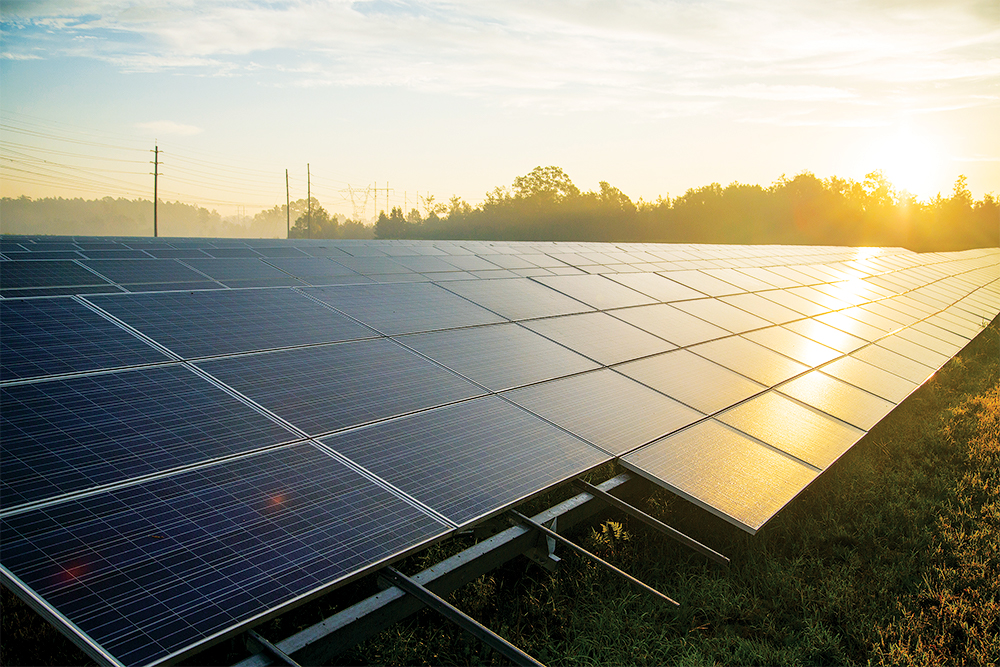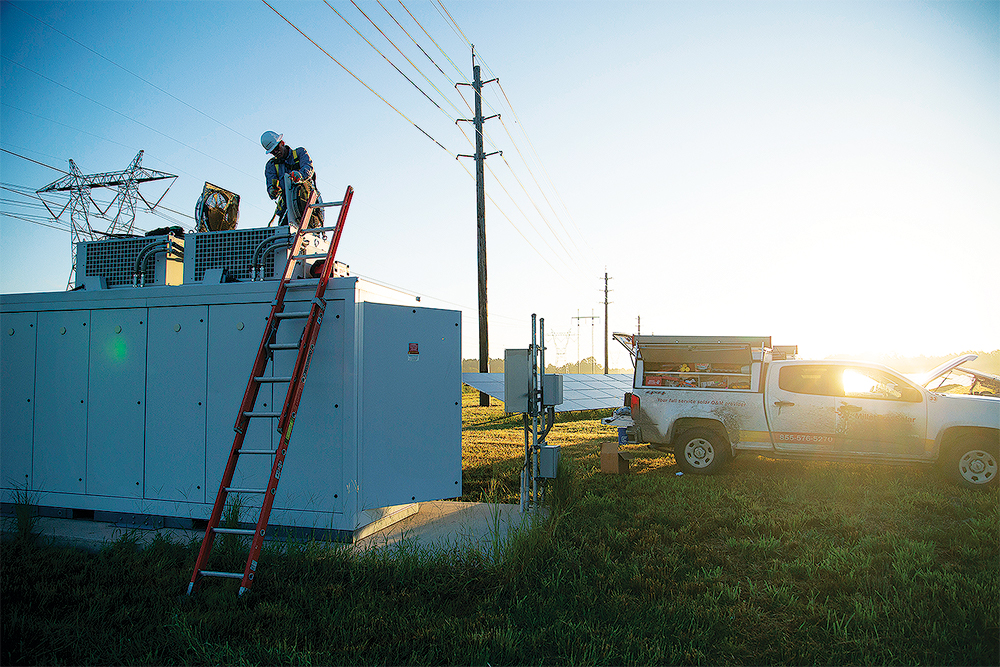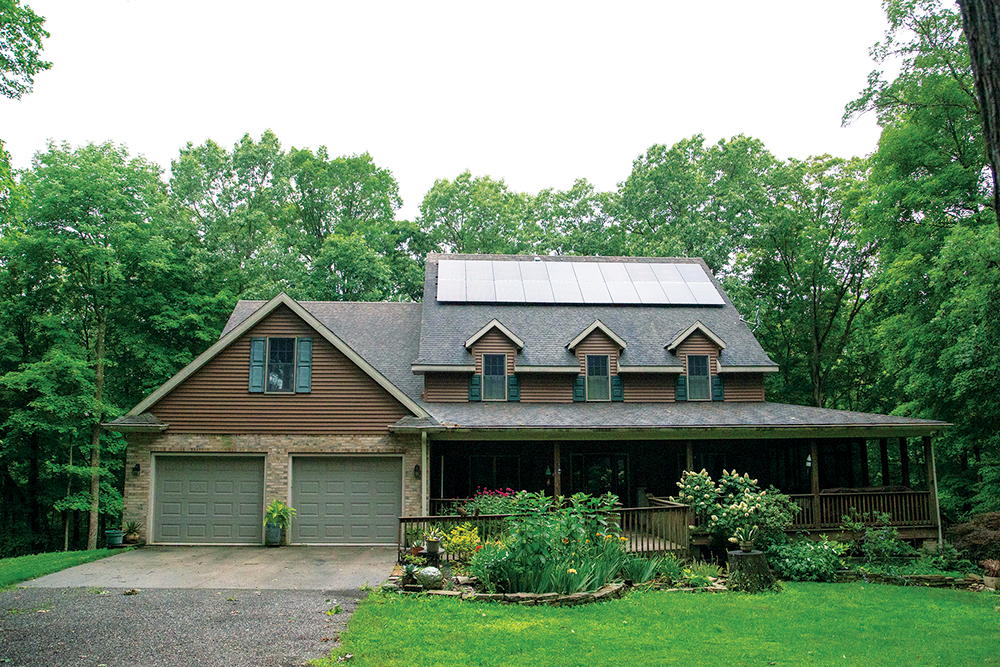The growth of solar power is making it a more useful energy source
By Paul Wesslund
Not long ago, solar energy was considered an oddity. Electricity generated from the sun was expensive, so not many people used it. Solar power barely registered on the list of electricity sources.
Then, members of local electric cooperatives started asking their co-ops if solar energy might be worth a try, so several of those local electric co-ops set up small panels of solar cells on their property as test projects.
Something to know about local electric co-ops is they don’t generate their own electricity. That’s a huge and costly project. So, they band together to form a larger co-op with the financing and technical expertise to build power plants and transmission lines. They call those generation and transmission co-ops, or G&Ts, because they make and ship the electricity to the co-ops, who ultimately send that power to your home or business.
As more and more solar panels started appearing on the front lawns of electric co-ops across the country, their G&T partners said, “We can help you out with those.”

Photo Courtesy Dennis Gainer, NRECA
The result has been a dramatic increase in solar energy generation, says Debra Roepke, a solar energy specialist who consults with the National Rural Electric Cooperative Association (NRECA).
“There’s been a tenfold increase in electric co-op solar capacity in the last five years,” she says, “and that’s on track to more than double over the next one or two years.”
Electric co-ops aren’t the only source of solar growth, of course. While the 900 electric co-op utilities across the country tend to serve small towns and rural areas, other utilities have been adding solar power as well.
Solar is spreading across the country, pushed by improving technology and declining costs. One industry analysis finds that the cost for electricity from large-scale solar energy installations has fallen 13% a year for five years. The cost has reached the point where it’s competitive with other fuels. Solar now supplies 2.3% of the nation’s electricity. That may not sound like much, but it’s the equivalent of more than 40 nuclear power plants, and the upward growth and declining costs are expected to continue.
And while electric co-ops can only claim a portion of the credit for the solar energy boom, they have pioneered parts of solar’s success, especially in an area called community solar. With community solar, the electric co-op builds a bank of solar panels and co-op members can buy or lease the electricity the panels generate.
“Co-ops are leaders in community solar,” says Roepke. Even though electric co-ops make up about 10% of the nation’s utility industry, she says, “At one point, co-ops had about 60% of all the utility-led solar programs.”
Roepke credits co-op solar energy developments to their industry business structure of member-owned distribution co-ops and their G&Ts.

Photo courtesy Dennis Gainer, NRECA
She says, “When co-op members are engaged with their local distribution co-op and the distribution co-ops are working with the G&Ts that they own, solar is a story about how the co-op model works.”
Community solar is one of three ways solar panels are used to make and deliver electricity. Probably the most well-known technique is called rooftop solar, where a homeowner lays solar panels on their roof or in the back yard. But most of the growth happens with utility-scale solar—fields of panels that can cover several acres. The growth in utility-scale solar is one reason costs are coming down—a bigger project can sell a lot more electricity without being that much more expensive to build, lowering the cost of each kilowatt.
Making solar energy more useful
As solar energy becomes more widespread, utilities are figuring out ways to make it more useful. Once it seemed obvious that there was no solar power at night. But bigger and more powerful storage batteries can soak up the sun for use later. Once it seemed solar power wasn’t so useful because it peaked during the day when no one was home. But utilities are using sophisticated computer software to figure out how to juggle power sources like solar, wind, coal and hydro among users, like homes, businesses and manufacturers.

Photo courtesy Dennis Gainer, NRECA
Other technologies make solar installations increasingly efficient and productive. Improvements in tracking technology mean more power as solar panels move to follow the sun across the sky. Bifacial solar panels contain solar cells on both sides of their surface, adding reflected light to the energy they receive.
Electric co-op expertise in solar energy includes rooftop and other residential solar setups. For a co-op member interested in trying solar power for themselves, Roepke says their local electric co-op makes a good first stop. The co-op can help answer questions like how much will it cost, will it pay off, how can it be installed safely and what vendors can be counted on. She cautions that there are a lot of people around the country installing residential solar panels, and their quality can vary.
“There are some very good rooftop vendors out there, but there are also some predatory vendors,” says Roepke. “Someone can make a claim that they’re going to save you all this money by putting solar on your roof, then six months after it’s installed, you wonder why you’re not saving all this money, and nobody can get a hold of the solar company.”
If you’re considering solar panels for your home, says Roepke, “Your electric co-op is a trusted energy resource. Talk to them first.”
Paul Wesslund writes on consumer and cooperative affairs for the National Rural Electric Cooperative Association, the national trade association representing more than 900 local electric cooperatives. From growing suburbs to remote farming communities, electric co-ops serve as engines of economic development for 42 million Americans across 56 percent of the nation’s landscape.




